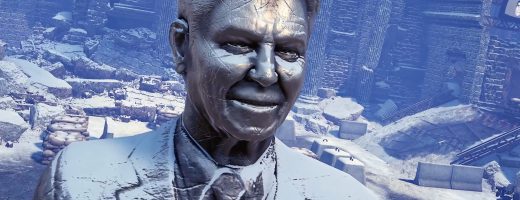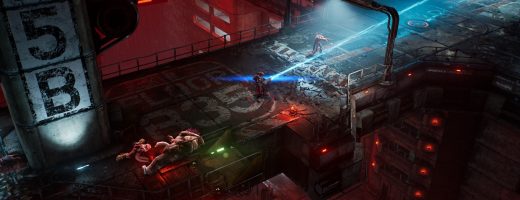Paranoia: Happiness Is Mandatory Review
Depth Is Not so Mandatory
Paranoia: Happiness Is Mandatory is inspired by the cult classic tabletop RPG of the same name. Much like the source material, it takes place in a dystopian universe reminiscent of George Orwell’s 1984, but the oppressive atmosphere is juxtaposed against plenty of tongue-in-cheek humor for a unique feel. While the setting is fun and different from most other experiences, the game doesn’t have much else to offer, partly due to how literally it tries to stick to this premise. Everything from the story, which lacks any semblance of character development, to the combat system, with very limited options that don’t much expand through the game, there’s just not much there to experience.
Paranoia takes place in Alpha Complex, a futuristic dystopian city controlled by the all-seeing Friend Computer. Players take on the role of a Troubleshooter, tasked by Friend Computer to take on missions during which they find trouble, and shoot it. These missions eventually build toward an overarching plot in which the player’s actions determine the future of Alpha Complex. The game does a good job of keeping the overarching plot suspenseful and interesting despite its simplicity and not offering anything new or particularly deep. And the humor peppered throughout elicits a few chuckles and keeps the dystopian experience somehow lighthearted.
Unfortunately, neither the characters nor the world are fleshed out in any detail, and both feel flat. There’s no backstories, and the dialogue is one-dimensional. This makes sense in the game’s world that suppresses individual thought and demands conformity, but it’s overdone here and misses the opportunity to explore human struggles against such dystopian systems. There’s also not much offered in terms of lore aside for those bits and pieces that are central to the plot, and even then, information is scarce. Even asking questions is often punished, leading to players not exploring what might be interesting dialogue options.
Gameplay features the standard point-and-click controls to move about and interact with the environment and NPCs. The protagonist starts each day by visiting Friend Computer, selecting a team of other Troubleshooters to take along, and heading off into the dungeons to complete Friend Computer’s missions. Players must also manage a treason meter, which fills up if they commit actions that Friend Computer considers treasonous. A large assortment of actions can qualify as treason, including going into high-clearance areas, asking the wrong questions, or damaging objects. If treason levels get too high, Friend Computer recommends that players find the nearest termination booth and terminate themselves before eventually sending a termination squad in, at which point a clone takes over the remaining missions. Death — which can only be done a handful of times before running out of clones — is the only method of “leveling-up”, and allows players to re-allocate the new clone’s skill points. This system offers the bare minimum of character progression, and it mostly comes as respecs rather than actual advancement.
The mission-based gameplay means that the world beyond the starting area is not free to explore at will, but some areas are revisited and give players multiple opportunities to look around. There’s not much reason to explore, as there are very few side-quests, and after each mission all items held in the tiny inventory are lost. Even within missions, the limited inventory space and lack of interesting items means that finding treasures is not particularly rewarding or even necessary to progress. There’s just one slot for armor, and one armor type per equipment tier. Weapons are similar, though unlike armor there are at least a handful of variations. Equipment upgrades are given to the party by Friend Computer at the start of each mission, so there’s really nothing to find by exploring aside from consumables.
The real-time-with-pause combat is also rather simple. Players only have up to three abilities to use, and combat generally revolves around clicking on targets and waiting for them to die. There’s a cover system that’s activated when going near objects in the environment, which essentially has the effect of blocking a percentage of incoming gunfire. Since enemies also use the cover system, the overall effect is to just prolong the dull combat, and I found it better to just run right up to enemies to speed it up since the outcome of battle was generally the same either way. On more challenging encounters, and on the small handful of thoughtfully designed bosses, players will have to use kiting tactics and constantly reposition to avoid damage. These encounters are far more engaging and require constant attention to succeed, but unfortunately are few and far-between.
Paranoia features simple but effective visuals. The semi-cartoonish style is appropriate and fits well with the game’s simultaneously funny and oppressive overtones. While there’s not a lot of variation in the environments, they manage to stay interesting due to good use of atmosphere and well-planned layouts and level designs. Character designs also lack variation, with only a handful of models and much palette-swapping. As with everything else, the soundtrack is also limited and lacks variety, offering only about ten tracks, a couple of which are remixed versions. While they are generally enjoyable, all are electronic tunes somewhere on the spectrum between “action” and “mystery”.
Paranoia offers a unique premise with a ton of potential and under which many interesting scenarios can unfold. The balance between oppressiveness and humor is executed well, giving a very unique feel to this particular dystopian setting. Unfortunately, the developers are unsuccessful in using these to flesh out the world and narrative or to create characters that feel alive. While there are some cool ideas like termination booths, treason level, and cloning, they are executed a bit too close to the letter of the source material and don’t translate to a fun experience in a CRPG. The game is an interesting experience purely for its world and general atmosphere, but ultimately it fails to come together due to the lack of depth in its mechanics, character development, and world lore.
Disclosure: This review is based on a free copy of the game provided by the publisher.


Well-executed premise and setting
Manages to feel both oppressive and lighthearted
Effective visuals that work well for the setting and tone
No character development
No character progression
Game mechanics are bare-bones across the board
Few models and palette swapping galore












Recent Comments